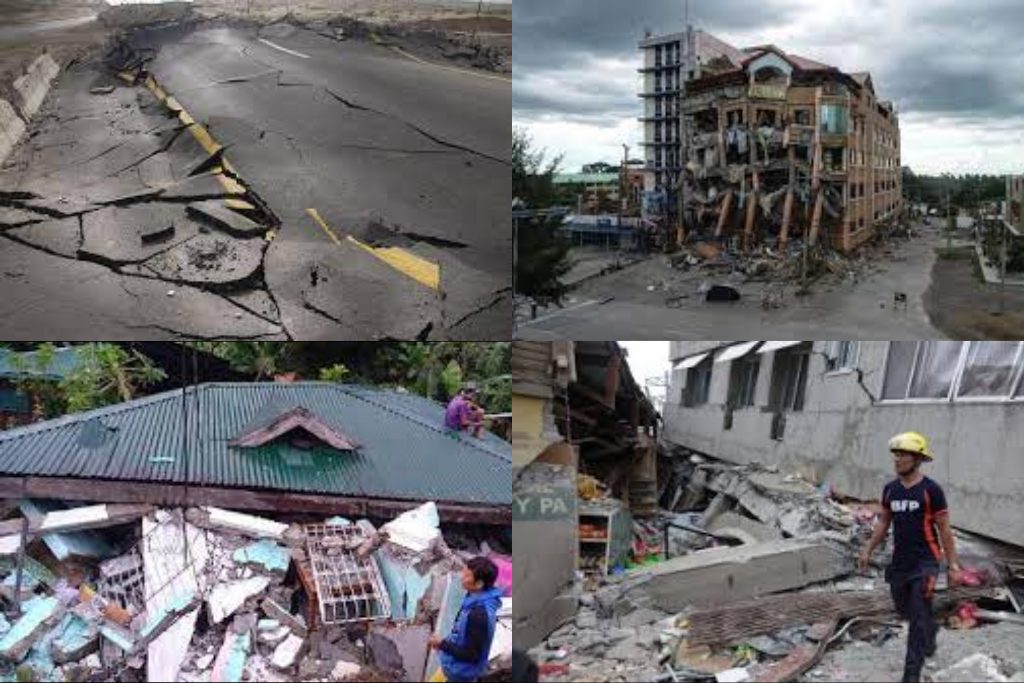The Philippines, a beautiful archipelago located in Southeast Asia, is no stranger to earthquakes. On Thursday, a powerful earthquake measuring 6.5 on the Richter scale struck Mindoro Island, sending tremors across the northern region. While earthquakes are a regular occurrence in this part of the world, this event serves as a reminder of the constant challenges faced by the resilient Filipino people. In this blog, we will explore the recent earthquake, the impacts it has caused, and the indomitable spirit of the Filipino community in the face of adversity.
The Earthquake:
On a seemingly ordinary day, the ground beneath Mindoro Island began to shake, as a 6.5-magnitude earthquake struck the northern Philippines. According to the German Research Centre for Geosciences (GFZ), the quake originated from Mindoro Island. The US Geological Survey (USGS) reported a magnitude of 6.2, with the epicenter located offshore near Calatagan municipality in Batangas province. The earthquake occurred at a depth of 124 kilometers, affecting areas near the capital city of Manila.
Impact and Aftermath:
As expected, the earthquake caused damage and left its mark on the affected regions. The Philippine seismology agency recorded a magnitude 6.2 earthquake and warned of potential aftershocks. While the extent of the damage is still being assessed, the aftermath of the quake is likely to include infrastructure damage, displacement of communities, and potential injuries or casualties.
Earthquakes are a common occurrence in the Philippines, given its geographical location along the Pacific “Ring of Fire.” This region is known for its intense seismic and volcanic activity. The movement and interaction of tectonic plates beneath the Earth’s surface result in earthquakes, which can cause significant damage and loss of life.
The recent earthquake, with a magnitude of 6.5, struck Mindoro Island, specifically near the municipality of Calatagan in Batangas province. The depth of the earthquake was recorded at 10 kilometers (6.21 miles) by the German Research Centre for Geosciences (GFZ), while the United States Geological Survey (USGS) reported a magnitude of 6.2 with a depth of 124 kilometers (77 miles). These variations in data can occur due to different measurement techniques and locations.
The Philippines: Living with Earthquakes:
The Philippines is situated in the Pacific “Ring of Fire,” an area known for its high seismic and volcanic activity. The archipelago experiences frequent earthquakes due to its location along this geological hotspot. In 2013, Bohol Island in the central Philippines was struck by a devastating magnitude 7.1 earthquake, resulting in tragic consequences for the local population. The impact was felt in the form of landslides, damaged infrastructure, and loss of life.
Resilience and Recovery:
Despite the recurring challenges, the Filipino people have shown remarkable resilience and strength in the face of natural disasters. Local communities, authorities, and organizations have come together time and again to provide assistance and support to those affected. Efforts are made to raise awareness about earthquake preparedness, evacuation procedures, and the importance of resilient infrastructure.
Cultural Heritage and Rebuilding:
Earthquakes not only affect the physical infrastructure but can also cause damage to cultural heritage sites. The birthplace of Catholicism in the Philippines, known for its historic churches, has suffered significant destruction in past earthquakes. Efforts to restore and preserve these iconic structures are crucial in maintaining the country’s rich cultural heritage.
Conclusion:
The recent earthquake in the Philippines serves as a reminder of the constant threat faced by the nation from seismic activity. Despite the challenges, the Filipino people continue to exhibit resilience and unity, standing strong in the face of adversity. As the recovery process begins, it is essential to emphasize earthquake preparedness, community support, and the protection of cultural heritage. By learning from past experiences and implementing proactive measures, the Philippines can build a more resilient future for its people.
For all the latest news, keep visiting The World News.



